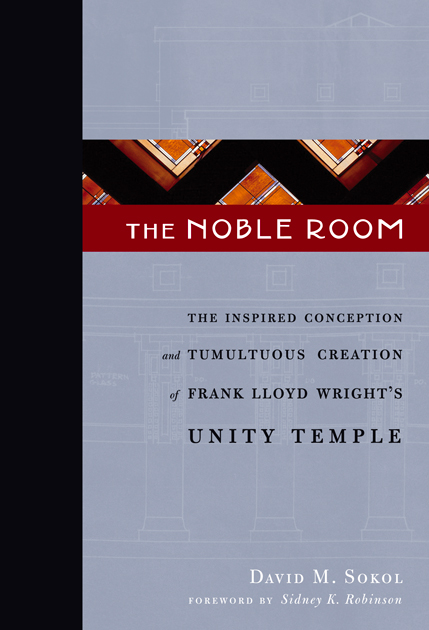 |
THE NOBLE ROOMTHE INSPIRED CONCEPTION and TUMULTUOUS CREATION of FRANK LLOYD WRIGHT'S UNITY TEMPLE
December 2008 | Architecture/History
Hardcover | 224 pages | $22.95 Includes 40 black-and-white photographs foreword by Sidney K. Robinson ISBN 978-0-9789270-3-5 eBook (ISBN: 978-0-9789270-7-3) | $9.99 "When I finished Unity Temple, I had it. I knew I had the beginning of a great thing, a great truth in architecture." —Frank Lloyd Wright Early on the morning of June 4, 1905, lightning struck the steeple of Unity Church in the Chicago suburb of Oak Park, igniting a fire that would raze the building to the ground. The Unitarian congregation suddenly needed a home and turned to local architect Frank Lloyd Wright for a new approach. Thus begins the story of a watershed moment in the career of the world's most influential architect and in the history of twentieth-century architecture and design. Wright's design for Unity Temple was radical in its simplicity—a monolithic concrete exterior—yet sublime in its detail and revolutionary in its use of interior space. With Wright's execution of Unity Temple, the ideas he'd been working on and experimenting with for years were finally brought to fruition, and modern design was born. But it might never have happened if not for a devoted Unitarian congregation who embraced Wright's ideas and remained faithful to the architect and his vision through the trials and calamities of construction. Unity Temple, when completed in 1909, was—and still is—considered one of the landmarks of modern architecture. Author David M. Sokol poured more than 20 years of research into The Noble Room and uncovers a dramatic tale—much of which turns out to be at odds with the accepted story of how Wright himself described the process. Anyone with an interest in architecture or in Frank Lloyd Wright—or indeed anyone who's ever had an addition put on to their house or a kitchen remodeled—will be caught up in the story of the tumultuous, chaotic creation of a modern masterpiece, which comes to life in The Noble Room. ABOUT THE AUTHORDavid M. Sokol has had a 40-year career as a professor of art history and has taught at the University of Illinois at Chicago since 1971. He chaired the department of art history for 17 years, becoming professor emeritus in 2002. In addition to teaching and writing on American and European art and architecture, Sokol has published articles and reviews on Frank Lloyd Wright and Unity Temple. He is the author of Oak Park, Illinois: Continuity and Change. He served on the board of directors for the Unity Temple Restoration Foundation and the Frank Lloyd Wright Home and Studio Foundation, and currently serves on the Illinois Historic Sites Advisory Council. Sokol lives in Oak Park, Illinois. |

Top Five Books, LLC,
is a Chicago-based independent publisher dedicated to publishing only the finest fiction, timeless classics, and select nonfiction.
is a Chicago-based independent publisher dedicated to publishing only the finest fiction, timeless classics, and select nonfiction.
© Top Five Books, LLC. All rights reserved.




